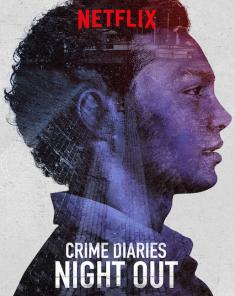2301-2015
الفيلم الوثائقي : الكاميرا ذات المليار بكسل - The Billion Pixel Camera - مترجم
من انتاج BBC من سلسلة The Sky at Night 2015 - تحميل مباشر - مشاهدة مباشرة
تاريخ الإضافة : الجمعة 23 01 2015 - 09:33 مساءً اخر تحديث : الجمعة 23 01 2015 - 09:56 مساءً
10,609
مواضيع مشابهة
-

الفيلم الوثائقي داخل مجرة درب التبانة
يحكي الوثائقي قصة مجرتنا بطريقة واضحة وديناميكية -

مسلسل Crime Diaries: Night Out الموسم الاول مترجم
الموسم الاول من مسلسل الجريمة الاسباني Crime Diaries: Night Out مترجم… -

فيلم Fright Night 2 2013 مترجم
فيلم الرعب والاثاره Fright Night 2: New Blood 2013 مترجم بجودة 720p BluRay -

فيلم Night at the Museum 2006 مدبلج للعربية
فيلم المغامره والكوميديا Night at the Museum 2006 مدبلج للعربية بجودة…

مجرة درب التبانة بكامل مجدها واسطورتها
لان كل الصور التي تظهر هي مجرد تصور من قبل العلماء صنعتها الات وبرامج التصميم
اذا كيف شكلها الحقيقي ,, باستخدام كاميرا المليار بكسل نحن قريبون من معرفة ذلك
اطلق العلماء الكاميرا الفلكية غايا الاكثر تقدما ومهمتها تصوير مجرة درب التبانة
تحتوي على اكبر اجهزة الاستشعار وتفوق في جودتها كاميرا التلسكوب
ترصد الفضاء وتعطي تصورا قريبا للمجرة
تحتوي هذه الكاميرا على أداة قياس فلكي وضوء ازرق واحمر , واداة لقياس السرعة
تقوم بسمح فضائي ويقوم العلماء بتقريبها الى الحقيقة
لان كل الصور التي تظهر هي مجرد تصور من قبل العلماء صنعتها الات وبرامج التصميم
اذا كيف شكلها الحقيقي ,, باستخدام كاميرا المليار بكسل نحن قريبون من معرفة ذلك
اطلق العلماء الكاميرا الفلكية غايا الاكثر تقدما ومهمتها تصوير مجرة درب التبانة
تحتوي على اكبر اجهزة الاستشعار وتفوق في جودتها كاميرا التلسكوب
ترصد الفضاء وتعطي تصورا قريبا للمجرة
تحتوي هذه الكاميرا على أداة قياس فلكي وضوء ازرق واحمر , واداة لقياس السرعة
تقوم بسمح فضائي ويقوم العلماء بتقريبها الى الحقيقة

روابط التحميل المباشر من أكوام
BBC.The.Sky.at.Night.2015.The.Billion.Pixel.Camera-akoam.net.avi - 146.73M - 507 DL
ESA's Gaia mission will produce an unprecedented 3-d map of our Galaxy by measuring, with exquisite precision, the position and motion of one billion stars. The key to this is the billion-pixel camera at the heart of its dual telescope system. This animation illustrates how that camera works.
From its orbit around the second Lagrange point (L2) of the Sun-Earth system, Gaia performs an uninterrupted scan of the sky. While the spacecraft slowly spins with a period of six hours, Gaia's two telescopes observe simultaneously two rectangular patches of the sky that are separated by an angle of 106.5 degrees. Each telescope has a large, rectangular primary mirror with a collecting area of about 0.7 m2. Three curved mirrors and three flat mirrors focus and repeatedly fold the light over a total distance of 35 m before it reaches the focal plane where the camera is located.
Gaia's camera contains three science instruments: the astrometric instrument, the blue and red photometer, and the radial velocity spectrometer. They are all based on digital detectors – charged coupled devices (CCDs) – that record light from astronomical sources. With a total of 106 CCDs, each consisting of more than eight million pixels, Gaia's camera boasts almost one billion pixels covering an area of 0.38 m2 – the largest focal plane ever flown in space.
The first two columns of CCDs on the right act as the star mapper and are used to identify the astronomical objects to be measured. The first column on the sky mapper (highlighted in blue) receives light only from Gaia's first telescope. The objects seen by this first telescope are shown in blue. The second column on the sky mapper (highlighted in pink) receives light only from Gaia's second telescope; objects seen by this telescope are shown in pink. With the exception of the star mapper, light from both telescopes passes across all three science instruments.
As Gaia spins, scanning great circles on the sky, the images of stars seen in its two telescopes move across the focal plane (from right to left in the animation). Because of the data volumes involved, it would be unfeasible to read-out and store all the images recorded by the CCDs at any given time. The sky mapper is used to identify a subset of astronomical sources to be measured.
A detection algorithm, running on the video processing unit, assigns a 'window' to each source to be measured. The windows are indicated as red boxes in the animation.
The largest science instrument on the focal plane is the astrometric field, which contains eight columns with seven CCDs each and one column with six CCDs. As a window moves across the columns of the astrometric field, the output from each CCD that the source has crossed is accumulated, read-out and stored. These data are crucial to calculate the position of stars and other astronomical sources to unprecedented precision.
After the astrometric field, the starlight passes through two filters that direct different wavelengths to the two columns of CCDs in the photometer: the blue photometer (first column) receives light with shorter wavelengths (from 330 nm to 680 nm), and the red photometer (second column) receives light with longer wavelengths (from 640 to 1050 nm). The resulting spectra can be used to determine the temperature, age and other properties of stars.
The final instrument to analyse the sources is the radial velocity spectrometer, which consists of three columns with four CCDs each. Since this has a smaller 'footprint' than the other instruments, only astronomical sources that crossed the four lower rows of CCDs in the previous instruments fall also on the radial velocity spectrometer. Lenses, prisms and a grating plate reduce the light to a very narrow band - between 845 and 873 nm - and provide a spectrum which encompasses three absorption lines of ionised calcium, known as the Ca II triplet lines. These absorption lines are recorded as dips in the source's brightness at a given wavelength: the difference between the observed wavelengths of a line in a star and the corresponding wavelength at which the same line is observed in the laboratory allows astronomers to estimate a star's radial velocity - the line-of-sight velocity with respect to Gaia.
For each source, all the information that has been recorded by the CCDs is compressed into a data packet and stored on board. The data packets are transmitted to Earth at a rate of about 8.7 Mbit/s, where they are received at ESA's ground stations in Cebreros (Spain), New Norcia (Australia), and Malargue (Argentina). Once these raw data reach Earth, they are ready to be processed by the Data Processing and Analysis Consortium (DPAC), who will take care of turning them into scientifically-useful data.
Higher resolution versions of this video are available on request; please use the Contact Us link in the left-hand menu.
From its orbit around the second Lagrange point (L2) of the Sun-Earth system, Gaia performs an uninterrupted scan of the sky. While the spacecraft slowly spins with a period of six hours, Gaia's two telescopes observe simultaneously two rectangular patches of the sky that are separated by an angle of 106.5 degrees. Each telescope has a large, rectangular primary mirror with a collecting area of about 0.7 m2. Three curved mirrors and three flat mirrors focus and repeatedly fold the light over a total distance of 35 m before it reaches the focal plane where the camera is located.
Gaia's camera contains three science instruments: the astrometric instrument, the blue and red photometer, and the radial velocity spectrometer. They are all based on digital detectors – charged coupled devices (CCDs) – that record light from astronomical sources. With a total of 106 CCDs, each consisting of more than eight million pixels, Gaia's camera boasts almost one billion pixels covering an area of 0.38 m2 – the largest focal plane ever flown in space.
The first two columns of CCDs on the right act as the star mapper and are used to identify the astronomical objects to be measured. The first column on the sky mapper (highlighted in blue) receives light only from Gaia's first telescope. The objects seen by this first telescope are shown in blue. The second column on the sky mapper (highlighted in pink) receives light only from Gaia's second telescope; objects seen by this telescope are shown in pink. With the exception of the star mapper, light from both telescopes passes across all three science instruments.
As Gaia spins, scanning great circles on the sky, the images of stars seen in its two telescopes move across the focal plane (from right to left in the animation). Because of the data volumes involved, it would be unfeasible to read-out and store all the images recorded by the CCDs at any given time. The sky mapper is used to identify a subset of astronomical sources to be measured.
A detection algorithm, running on the video processing unit, assigns a 'window' to each source to be measured. The windows are indicated as red boxes in the animation.
The largest science instrument on the focal plane is the astrometric field, which contains eight columns with seven CCDs each and one column with six CCDs. As a window moves across the columns of the astrometric field, the output from each CCD that the source has crossed is accumulated, read-out and stored. These data are crucial to calculate the position of stars and other astronomical sources to unprecedented precision.
After the astrometric field, the starlight passes through two filters that direct different wavelengths to the two columns of CCDs in the photometer: the blue photometer (first column) receives light with shorter wavelengths (from 330 nm to 680 nm), and the red photometer (second column) receives light with longer wavelengths (from 640 to 1050 nm). The resulting spectra can be used to determine the temperature, age and other properties of stars.
The final instrument to analyse the sources is the radial velocity spectrometer, which consists of three columns with four CCDs each. Since this has a smaller 'footprint' than the other instruments, only astronomical sources that crossed the four lower rows of CCDs in the previous instruments fall also on the radial velocity spectrometer. Lenses, prisms and a grating plate reduce the light to a very narrow band - between 845 and 873 nm - and provide a spectrum which encompasses three absorption lines of ionised calcium, known as the Ca II triplet lines. These absorption lines are recorded as dips in the source's brightness at a given wavelength: the difference between the observed wavelengths of a line in a star and the corresponding wavelength at which the same line is observed in the laboratory allows astronomers to estimate a star's radial velocity - the line-of-sight velocity with respect to Gaia.
For each source, all the information that has been recorded by the CCDs is compressed into a data packet and stored on board. The data packets are transmitted to Earth at a rate of about 8.7 Mbit/s, where they are received at ESA's ground stations in Cebreros (Spain), New Norcia (Australia), and Malargue (Argentina). Once these raw data reach Earth, they are ready to be processed by the Data Processing and Analysis Consortium (DPAC), who will take care of turning them into scientifically-useful data.
Higher resolution versions of this video are available on request; please use the Contact Us link in the left-hand menu.
مواضيع مشابهة
-

الفيلم الوثائقي داخل مجرة درب التبانة
يحكي الوثائقي قصة مجرتنا بطريقة واضحة وديناميكية -

مسلسل Crime Diaries: Night Out الموسم الاول مترجم
الموسم الاول من مسلسل الجريمة الاسباني Crime Diaries: Night Out مترجم… -

فيلم Fright Night 2 2013 مترجم
فيلم الرعب والاثاره Fright Night 2: New Blood 2013 مترجم بجودة 720p BluRay -

فيلم Night at the Museum 2006 مدبلج للعربية
فيلم المغامره والكوميديا Night at the Museum 2006 مدبلج للعربية بجودة…
